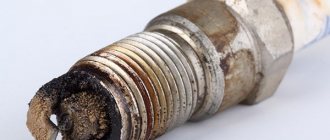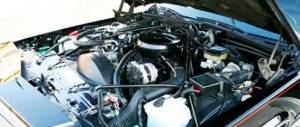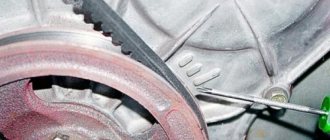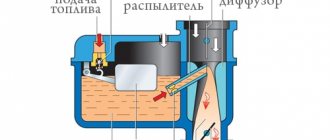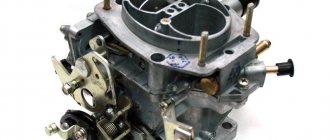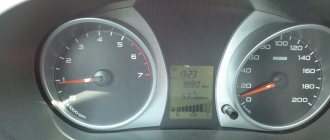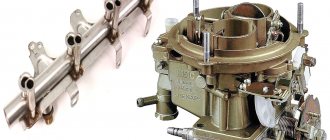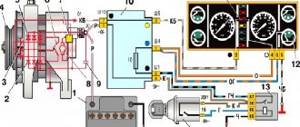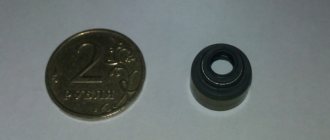Buying a car, whether new or used, is certainly an important event in the life of every person. A personal vehicle is a very significant acquisition, which very often contributes to the manifestation of a sense of responsibility in the new car owner. Of course, every person wants his new property to serve him faithfully for a long time, but many different factors influence the physical condition of the car and the service life of all its parts and mechanisms.
For those people who have the opportunity to change their vehicle constantly over several years, repair and maintenance work will not pose any particular problems. But very often a person buys a car, which he uses for long enough to personally encounter some nuances that require personal intervention, waste of money and personal time.
One of the first troubles that a car owner may encounter is the appearance of an unpleasant odor in the car interior.
The interior of a car is the personal space of its owner. Therefore, the appearance of foreign odors in it requires a person to solve certain problems associated with their elimination, of course, if he does not want him to constantly smell unpleasant, and the passengers of his vehicle do not express their dissatisfaction.
The appearance of the smell of gasoline is fraught not only with aesthetic troubles, but also carries with it the possibility of a dangerous situation: gasoline vapors are very toxic, so inhaling them can lead to serious consequences for the human body. In addition, probably every person knows that gasoline is very flammable, which means its appearance in the air of a closed space inside a car automatically creates a fire hazard. Let's look at the main reasons for the smell of gasoline in the car interior and methods for eliminating it.
The unpleasant smell of gasoline in the vehicle interior cannot be removed by normal ventilation, unless, of course, it is caused by a normal fuel spill. Even in this situation, it is necessary not only to ventilate the interior of the car, but also to thoroughly clean it, since even a small puddle of fuel can lead to catastrophic consequences. However, the smell is usually caused by a malfunction of one of the important components of the car, which requires immediate repair.
If you detect a specific smell of gasoline, you must immediately check the entire fuel system of the vehicle, the basis of which is the vehicle tank.
What could be the reasons for the failure of this structure? There are more than enough of them:
—
the fuel tank may fall off its mountings, which may lead to a hole appearing in it due to constant contact with the car body. The solution to this problem is to contact a service station. Under no circumstances should you fix this problem yourself if you don’t know exactly how to do it. The intervention of an inexperienced person may lead to a fire or explosion during repair work;
—
The fuel tank cap may become unusable over time, causing the container to depressurize. The solution is to go to a specialized store to purchase a similar product;
—
Another reason for the smell of gasoline in the car interior is poor fastening of the fuel hoses or wear of these elements. In the first case, it is necessary to secure the fuel cells more securely, in the second, to replace them with new ones;
—
Contamination of the fuel pump can also lead to the appearance of a gasoline smell. If the fuel pump does not work and its repair and cleaning is possible, it is necessary to carry out repair work;
—
do the same with a clogged fuel filter, which is subject to constant contamination over long periods of operation;
—
Cars with carburetor systems can cause an unpleasant odor due to incorrect settings of the mechanism. In this case, there is a significant overconsumption of fuel and its unauthorized leakage. The carburetor can be adjusted at a specialized station or independently if you have the necessary skills;
—
Another common cause of odor in the car interior is a loose gas cap. Each car owner can solve this problem independently. It is necessary to disassemble the rear part of the car interior, pull the plastic trim aside, loosen the clamps, install the plug correctly and tighten the clamps again - the plug should take the correct position;
—
An incorrect weld on the gas tank can cause fuel to leak out, which can lead to an odor in the cabin. You can try to quickly solve the problem using cold welding. If there are too many holes in the body, you will have to completely replace the tank with a new product;
—
gasoline constantly releases vapors, which are collected in the car by a special device - an adsorber, which is located in the rear wheel arch of the vehicle. Over time, the adsorber becomes dirty or completely fails, so it must be periodically cleaned or replaced with a new product;
—
The neck of the fuel tank of the car is located in the immediate vicinity of one of the rear doors of the vehicle. Wear of the door seal allows gasoline vapors to penetrate into the vehicle interior, which means it needs to be checked and, if necessary, replaced with a new one;
—
We think that every car owner knows where the spark plugs are located in his vehicle. They can also cause odors if they are not tightly screwed on. The solution is very simple - check the spark plugs and install them correctly at their destination;
—
The last reason why the car interior smells of gasoline is damage or wear to the gas pump gasket. It should be checked and, if necessary, replaced with a new product.
All of the above reasons for the smell of gasoline in the car’s interior apply primarily to foreign or modern domestic vehicles. Older representatives of the domestic automotive industry very often have such a disadvantage as a poor ventilation system. Therefore, if you could not find the reason for the smell of gasoline using the points listed above, it is possible that everything is in order with the fuel system. It is necessary to repair and prevent the interior ventilation. Perhaps this will solve the question of how to get rid of the smell of gasoline in your car.
Fuel system features
Almost any fuel cell can become unusable. As a result, an unpleasant odor will appear. Inspecting the car should start with weak points.
The fuel system elements are located along the entire length of the body. This is done for greater security. Thus, the fuel tank is located at a safe distance from the engine, which can become very hot during operation. In addition, the vehicle’s engine is entangled with electrical wiring through which current flows into various compartments. Of course, it’s no secret that the fuel tank is precisely the part of the car that poses a potential danger.
In the engine compartment, as a rule, there is a minimum of gasoline, which is necessary for the normal operation of the car. However, this system layout also has some disadvantages:
- Fuel line too long.
- Availability of various types of connections.
In most cases, or rather in 90 percent of all, fuel leakage occurs precisely from the gas tank or from its elements that are attached directly to it or located nearby. But there is more fuel here.
Finding the problem: fuel system
Does the inside of your car smell like gasoline? Then you should start looking for the problem with the gas tank. Especially if a fuel leak has become obvious. A fuel tank, as you know, consists of several elements that are connected to each other by various devices: flanges, composite structures, and so on.
It is worth checking the tension and condition of the belts periodically. They perform the function of fasteners. Using tapes, the gas tank is fixed to the body. The examination should also be carried out for preventive purposes.
It is worth remembering that the fuel tank can contain up to one hundred liters of gasoline. As a rule, this amount has a lot of weight. Most often, the tank is suspended from the body; very rarely it is placed in the trunk. The fastening consists of flexible steel strips that pass under the bottom of the part. Such tapes are attached to the body with fairly powerful bolts. Such a mount should ensure that the fuel tank remains stationary. However, with strong shocks, the part still rubs against the body. Of course, many manufacturers provide this. Therefore, special gaskets are installed between the body wall and the tank. Over time, these products wear out. As a result of this, the fuel tank acquires, although insignificant, mobility, which can lead to the formation of a small hole. As a result, the smell of gasoline appears in the cabin.
In addition, it is worth remembering the phenomenon of corrosion. The fuel tank may leak under its influence. This most often occurs in older vehicles.
content .. 99 100 101 102 ..Lada Priora (2019). The smell of gasoline in the cabin, reasons
Causes
Fuel pump malfunction
or rupture of its sealing elements (gaskets);
Scuffs and holes in the gas tank
. It is necessary to check the reliability of its fastening. If it rubs against the body parts of the car, over time holes will appear in it, through which the smell of gasoline will escape and enter the cabin. In such a situation, it is necessary to repair the gas tank;
Depressurization of the fuel tank cap
;
Problem with fuel hoses
: poor tightening or presence of cracks;
Dirty fuel filter
. If this is the problem, it needs to be replaced;
Spark plugs are not tightened properly
or carbon deposits have formed on them;
The tank fell off its mounts
. If the tank falls off, it will rub against the body of the car. Over time, a hole will form on it through which gasoline will flow. The tank can be repaired at a service station.
Tank cap malfunction
. The fuel tank is equipped with a sealed cap that prevents leakage. However, over time it may break and then need to be replaced. The gas tank cap does not close the filler neck tightly. To solve the problem, you need to disassemble the rear part of the cabin and, by pulling off the plastic trim, slightly loosen the clamps. After this, screw the fuel tank cap tightly and tighten the clamps again tightly. Then it will take the correct position, tightly closing the neck. The fuel pump gasket is leaking fuel. The fuel pump is located under the rear seat. If the gasket is damaged, it must be replaced with a new one.
Fuel hoses are incorrectly secured or frayed
. In such cases, fuel begins to flow through the clamps. They must either be replaced or tightened to the required standard.
The fuel pump is not working well
. The operation of the unit may be difficult due to contamination or damage. In a carburetor car, the fuel pump can leak if the membrane breaks.
Fuel filter clogged
. If this problem occurs, you just need to clean the fuel filter or replace it.
Incorrect carburetor setting
. In this case, excessive fuel consumption occurs. Excess gasoline leaks out and gives off a characteristic odor.
External factors
. The smell of fuel may come from an old domestic car that is driving in front of you. Your car's air intake system sucks in this air, causing the smell to spread throughout the cabin. To combat this, you need to turn on air recirculation.
Gas tank perforation
. May occur due to a weld defect. It can be eliminated using “cold welding”. The problem may also be the presence of multiple holes formed as a result of the development of corrosion processes. Such a tank, naturally, needs to be replaced, since corrosion will spread over the entire surface. This will lead to disastrous consequences.
The adsorber is clogged
. This device is installed in the rear wheel arch and is designed to collect gasoline vapors. During operation, the adsorber becomes clogged and must be periodically cleaned and replaced.
Door seal wear
. This is the rarest and most specific reason for the appearance of a fuel smell in the cabin. The fact is that the fuel tank filler flap is located near the edge of the right door. When the seal wears out, gasoline vapors enter the vehicle interior. The way out of this situation is to replace the seal.
Loosely twisted candles
. It is necessary to tighten them properly, and if they break, replace them.
Listed above are the most common reasons why the smell of gasoline appears in the car interior. There are also more specific situations, for example, the problem may be related to the car door trim, near which the gas tank is located. If the trim or seal in the car door has become unusable, odors from the fuel tank hatch will be heard in the cabin. The easiest way to determine the reason why the car smells like gasoline is at a service station. Specialists can check the car using diagnostic equipment, and if no errors are found, it will be possible to rule out problems with the engine, fuel system and other units and start looking for an easier cause to eliminate.
content .. 99 100 101 102 ..
Filler neck in the tank
The weakest point of the fuel tank is the filler neck. Problems with this part can lead to the smell of gasoline in the cabin. The filler neck can be welded or screwed to the fuel tank using a rubber gasket. The latter fixation option is considered more reliable. If damaged, the welded joint can quickly fail. But the gasket and flange will last quite a long time.
If the car interior smells like gasoline, then first of all you need to inspect the welded joint. If there are defects, they should be eliminated.
Fuel pump manhole cover
The car interior should not only be clean, it should smell nice. However, this is not always possible to achieve. There is another weak point in the fuel system - the cap that holds the fuel pump in one module inside the tank. This part is usually secured with screws that are threaded through holes drilled along the contour. Under this cover there is a rubber gasket, which is often the weak link. This part is constantly exposed to fuel vapors. After a certain time it simply collapses. As a result, the seal is broken, resulting in the smell of fuel in the cabin.
Dish detergent
Gasoline is an oily chemical product. To remove fuel stains, you can try using dishwashing detergent on them. After all, such liquids have a special chemical composition that allows you to quickly break down fats. In addition, dishwashing detergent necessarily contains fragrances and fragrances that help get rid of unpleasant odors.
It is enough to pour a little liquid onto the fuel stain and wait until it is absorbed, and then carefully rinse with water. If the contamination is large, it must be removed in several approaches.
Why does the car smell like gasoline: the main reasons
It is quite difficult to clearly name the reason for the smell of fuel in a car. It is believed that for Russian-made cars, especially with high mileage, this situation is the norm, but this is not the case. Most often, the unpleasant smell of gasoline in the car appears for one of the following reasons:
Listed above are the most common reasons why the smell of gasoline appears in the car interior. There are also more specific situations, for example, the problem may be related to the car door trim, near which the gas tank is located. If the trim or seal in the car door has become unusable, odors from the fuel tank hatch will be heard in the cabin.
The easiest way to determine the reason why the car smells like gasoline is at a service station. Specialists can check the car using diagnostic equipment, and if no errors are found, it will be possible to rule out problems with the engine, fuel system and other units and start looking for an easier cause to eliminate.
Why does the car smell like gasoline?
So, let's start the discussion in order from the most common reasons to the less common. According to statistics, owners of VAZ-2107 cars, as well as VAZ-2110, VAZ-2114 and some other front-wheel drive VAZs, most often encounter the problem of smelling gasoline in the cabin. However, similar problems also occur with Daewoo Nexia, Chevrolet Niva, Daewoo Lanos, Ford Focus, as well as older models of Toyota, Opel, Renault and some other cars.
Leaky joints of the fuel level sensor
Leaky fuel system joints are a very common reason for a car smelling like gasoline. This is especially true for front-wheel drive VAZs. The fact is that under the back seat of these cars there is a junction point for the fuel cells. To perform the appropriate inspection, you need to lift the rear seat cushion and fold back the hatch to get to the mentioned elements. After this, tighten all threaded connections that relate to the fuel line.
If tightening the mentioned elements does not help, you can use ordinary soaked laundry soap . Its composition can prevent the spread of gasoline, as well as its smell. You can even lubricate cracks in gas tanks or other elements of the fuel system with soap, since the elements included in its composition reliably seal the joints. Thus, you can lubricate with soap all the connections of the fuel system under the hatch located under the rear seat of the car. Often, this procedure helps in cases where there is a strong smell of gasoline in the interior of a front-wheel drive VAZ car.
Crack between tank and neck
In most modern cars, the gas tank design consists of two parts - the tank itself and the neck welded to it. The weld is made in a factory setting, but over time (due to age and/or corrosion) it can delaminate, thereby causing a crack or a small pinhole leak. Because of this, gasoline will get onto the inner surface of the car body, and its smell will spread into the cabin. This defect especially often appears after refueling or when the tank is more than half full.
There are also models (although there are few of them) that have a rubber gasket between the neck and the tank itself. Over time, it can also crumble and leak fuel. The consequences of this will be similar - the smell of gasoline in the cabin.
How to eliminate the smell of gasoline in the car interior
Often the cause of an unpleasant smell of fuel in the car interior is the carelessness of the driver himself. If you accidentally spill a little gasoline on the seats, floor, floor mats, or even in the trunk, the smell will certainly permeate the cabin. If any source of fuel odors is detected, it must be cleaned and the smell removed. This can be done using car shampoos, but if the smell of gasoline continues to linger after using them, then you can try “folk remedies.”
The persistent smell of gasoline in the cabin is, in general, a common occurrence for owners of Soviet-era cars. However, if you have recently purchased a more or less modern budget or mid-class car, then such smells are a serious cause for concern.
If the interior smells of gasoline, this may indicate either minor or critical breakdowns. What to do if you are faced with such a situation? The editors of the site decided to deal with the problem and find the best ways to eliminate it.
There can be quite a few reasons:
- poor seal of the fuel tank cap;
- leaks in the fuel line;
- coarse or fine fuel filters are clogged;
- low engine compression level;
- The spark plugs are poorly tightened, incorrectly selected, and carbon deposits form on them.
Let's look at each of the faults separately.
The tightness of the fuel tank hatch is achieved through an elastic gasket or a special valve. Over time, cracks appear on the surface of the gasket due to constant vibrations or overheating. The valve can also simply break. The best decision is to purchase a new cover, since there is no point in repairing it.
In addition, the tank is also subject to aging and may rust, causing leaks. The situation in itself is dangerous, since a small spark may be enough to make you think not about eliminating the smell of fuel, but about buying a new car.
The smell in the cabin will be even stronger if the trim or seal of the rear doors, which are closest to the tank, has become unusable. Accordingly, odors from the street will enter the interior through microscopic cracks and cracks.
Problems with the fuel system
If you do not change fuel filters on time, they become clogged. This needs to be done regularly, especially after the autumn-winter period, when you switch from winter to summer fuel.
If the filter is clogged, the fuel pump has to spend more effort to supply fuel to the engine. Due to an increase in pressure in the system, the fuel lines may not withstand the increased load; cracks appear in them, through which drops of diesel or gasoline leak.
The reasons may also be in the fuel pump:
- gasket wear;
- membrane rupture;
- poorly screwed fuel wire fittings.
You can replace the membranes or gaskets yourself; just purchase a fuel pump repair kit, which includes all the necessary gaskets, O-rings and seals. Of course, at a specialized service station this work will be done with better quality and with a guarantee, although you will have to pay more.
It is also regularly necessary to carry out a complete diagnosis of the fuel system, starting with the gas tank and ending with the injection system. For example, the fastenings of the fuel lines may become loose, so they should be tightened using special wrenches or metal clamps.
The smell of gasoline from under the hood
You can determine the presence of problems in the engine compartment by a variety of signs:
- increased fuel and engine oil consumption;
- overheat;
- gray or black smoke from the muffler;
- significant reduction in power;
- Soot appears on the candles.
For example, on carburetor engines, very often due to incorrect carburetor settings, fuel can simply leak through the gasket. Try cleaning the carburetor, and after a short drive you will be able to find the leaks.
If the mileage on your car's odometer exceeds 150-200 thousand kilometers, then, most likely, a major engine overhaul will be required. You will have to bore the cylinders and install repair pistons and P1 rings. This is necessary to increase the level of compression, since due to the loose fit of the pistons to the cylinders, the fuel-air mixture does not burn out to a residue. Because of this, power decreases.
A malfunction of the porcelain catalyst of the exhaust system or turbine may also affect it. The catalyst acts as a filter; it traps fuel particles. If it is completely clogged or faulty, then black smoke will come out of the muffler. In the turbine, the evaporation from the exhaust manifold is burned for reuse.
In any case, if such signs are detected, you should go straight to the service station, where a complete diagnosis of all systems of your car will be performed.
Additional reasons
The smell can also enter the cabin due to the so-called air turbulence that occurs above the surfaces of fast-moving cars. Air is drawn into the cabin from the street not only through the air conditioner air intake, but also through small cracks in the door seals. Check them in a timely manner for tightness and elasticity.
Do not forget also about cleanliness and order in your car. So, if you have a minivan or hatchback and you often carry fuel and lubricants in cans with you, do not forget to check the condition of the cans themselves and the tightness of the lid.
How to get rid of the smell of gasoline?
You can find various products for removing foreign odors on sale. However, there are also popular methods available to everyone:
- baking soda absorbs the smell of gasoline - just sprinkle it on problem areas for 24 hours and then wash off;
- vinegar - treat the rugs with it and leave it to air in the air. You can also wash the floor and wipe all surfaces, however, after this procedure the car needs to be ventilated for a long time;
- ground coffee also absorbs odors - sprinkle it on problem areas, cover with a rag on top and secure with adhesive tape. Remove it after a few days and you should no longer experience any problems.
Do not use sprays or fragrances under any circumstances, as mixing odors can only make the situation worse, and this will affect the driver’s concentration and the well-being of all passengers in the cabin.
The smell of gasoline appears in the car interior for various reasons, mainly related to a malfunction of the fuel system. To eliminate the pungent odor, it is necessary to prevent fuel leakage. This is especially important to do as a malfunction can lead to a fire.
All elements of the car’s fuel system are located along the length of the body - this was designed specifically for safety. The gas tank is placed away from the engine, in the rear of the car, to reduce the risk of explosion.
There are, of course, disadvantages to such a fuel system: the gas line is very long and it uses many connections and wiring. Most often, fuel leaks occur exactly where it is stored - that is, from the gas tank or other element that is located on or near it. You need to know how to eliminate such dangerous leaks.
The main causes of odor in the car interior:
Since the bulk of the fuel is located in the tank, the search must begin there. Perhaps it is simply worn out or rusted.
The tank can hold up to 100 liters of fuel, so the weight when full can be very large, resulting in a lot of stress on the mountings. Most often, the tank is suspended from the body, and the suspension looks like curved iron strips that are evenly spaced under the bottom of the tank.
These strips are attached to the body using high-strength bolts, and, ideally, the tank should not move, but during driving, due to high vibration, it often rubs against the body of the car. The designers of the VAZ2110 thought about this, so they installed special rubber gaskets between the tank and the car body, but with intense and extreme driving, these gaskets slowly wear out, and therefore the tank begins to move a little, which leads to rubbing of the tank.
Advice: Periodically inspect all elements of fuel equipment and gas lines, as your safety depends on it.
The tank may also rust due to low-quality metal or fuel. This mainly happens in old cars and cannot be restored. If the tank on your car is worn out or rusted, then you need to change it immediately, and for prevention, monitor the tension of the tank fastenings more often.
This is the second weak point. The neck is attached to the tank using a special gasket and bolts, as well as by welding. The latter method is less reliable because the welds are often destroyed - a bolted neck will last longer, even when the tank swings violently in different directions.
Therefore, when the smell of gasoline appears in the interior of a VAZ, the welding seams on the tank should be checked first.
- Neck cap
It should fit snugly to the neck, gasoline should not leak from under it, so monitor the condition of the gasket.
The lid also has a special valve through which steam is released
gasoline when the pressure in the tank increases (in summer). But due to wear of the gasket, the vapors will freely escape into the atmosphere. Basically, in modern cars, the neck of the tank is recessed into the car body and is closed with its own lid and on top with a hatch cover; as a result, when the gasket wears out, vapors enter the cabin and not outside.
If the gasket under the tank cap is in good condition, then you need to continue searching for the leak further. If the gasket is dry or cracked, the cover must be replaced.
There is another rather vulnerable place in the tank - this is the cap to which the gas pump located in the tank is attached, this applies to modern cars, such as the VAZ2114.
The fuel pump cover is attached to the tank using bolts. There is also a rubber gasket under the cover, which is the weak point of the structure. This gasket is exposed to gasoline, which quickly destroys the rubber.
Advice Experienced VAZ 2109 car owners recommend that if there is a smell of gasoline in the cabin, first of all, check the entire gas line for leaks, starting from the area under the rear seats and reaching the carburetor. However, if the car smells not of gasoline itself, but of exhaust gas, then special attention should be paid to the seals of the lights and rear doors.
If the fuel pump breaks down and the cover is removed and placed unevenly, the gasket may break or fail to fit tightly. In this case, it does not create the necessary tightness of the connection, which is why fuel leakage occurs. A torn or worn gasket must be replaced. You need to make sure that the lid is level.
Valve for the system of releasing gasoline vapors from the gas tank. Most often, a special valve is placed on the gas pump cap to release gasoline vapors from the gas tank. The valve has a pipe onto which a hose is placed—it is through this that gasoline vapors enter the adsorber tank. During the operation of the car, this rather fragile pipe may break, resulting in a leak, and as a result, there will be an unpleasant smell of fuel in the car interior. To get rid of this you will have to change the valve. Such a breakdown is especially typical for injection vehicles, including the VAZ2107 model.
- Fuel line (clamps, pipes)
In the fuel line, elastic hoses are used in moving places, which can fray when driving on uneven roads, and the clamps on them can become loose at the joints. Because of this, gasoline will begin to escape through them, which will lead to the penetration of fuel vapors into the cabin. And this is the most common reason for the smell of fuel in the car interior.
As a result of incorrect adjustment of the carburetor, the fuel will overflow, and gasoline vapors from under the hood will penetrate into the interior of the car. This does not apply to injection machines.
- Fuel filter
During long-term operation, the filter may become clogged with dirt, as a result of which the pressure in the gas line will increase and cause leaks, for example, of clamps. To prevent this from happening, you need to change the fuel filter on time.
Knowing all the vulnerable points of the fuel system, you can quickly eliminate the causes of the smell of fuel in the cabin by performing a simple inspection of the car.
Advice If the smell of gasoline appears after turning on the heater (in winter), then the leak is happening somewhere under the hood.
Causes of the smell of gasoline in the car interior
List of reasons for the appearance of a gasoline smell inside a car:
- the sealing rubber of the gas tank cap came off or broke, or maybe they completely forgot to close the tank (this sometimes happens at gas stations, even my brother once forgot to take the pistole out of the tank and drove off like that);
- It often happens that at the junction of the tank and the neck, the weld deteriorates, and gasoline vapors begin to escape from there;
- leakage from the joints of the fuel line pipes;
- Exhaust gases enter the cabin when the windows are open, due to leaky door seals and a clogged cabin filter;
- the sealing elements of the fuel pump do not hold and leak;
- The fuel level sensor in the tank is not hermetically installed;
- the submersible fuel pump module is not sealed;
- when transporting fuel in canisters, for example, a leaky canister fell in the trunk or transportation was carried out on the floor in the cabin.
In which cars is the smell of gasoline most common in the car interior?
Drivers of classic VAZ cars (that is, rear-wheel drive, VAZ 2101-2107) and front-wheel drive VAZ 2110, 11, 12, 13, 14 models often encounter problems such as the smell of gasoline in the cabin.
Fuel level sensor
One of the common causes is a leaky fuel sensor. Leaky joints of connecting elements create fuel leakage. Basically, the problem with the fuel sensor occurs in VAZs with front-wheel drive (VAZ 2108-2115 and new models).
Why in these cars, because the sensor in these cars is mounted in a place under the rear seat. To check, you need to raise the seat, open the hatch in the bottom and check the connections.
For prevention or if gasoline vapors continue to enter the cabin, laundry soap is a good remedy. You need to cover up the joints with soaked laundry soap; even if there are microcracks, the soap will close them.
Crack between the gas tank and its neck
Gas tanks are not cast, so it is made from several elements welded to each other. The cause of a leak in the gas tank may be the welded connection between the neck and the tank.
Droplets of gasoline leaking through a leaky weld flow down the outer wall of the tank and from there the smell spreads throughout the cabin.
There are gas tank designs that have a rubber seal between the neck and the tank. Over the years, rubber begins to crack and crumble, hence the leakage.
If the reason is actually in the connection between the neck and the tank itself, then you can either completely replace it with a new tank, or coat the seam with laundry soap. The soap lasts a long time, you can use it for several years.
Fuel pump hatch
In some car designs, the fuel injection pump, together with the fuel level sensor, is mounted on a cover that is attached to the fuel tank. The cover is attached to the tank with bolts. First, place a rubber gasket under the cover. Over time, this gasket can lose its properties and leak.
How to eliminate the smell of gasoline in the car interior?
Gasoline vapors can appear in the cabin for many reasons, but there are few effective ways to solve this problem. Below are the most common ways to get rid of this difficult problem.
- Weathering. This method of elimination is the most effective; it allows gasoline vapors to quickly dissipate. If the smell in the cabin appears in the summer, then you need to open all the doors, as well as the trunk, to create a draft. A fan can be used to speed up this process. If you smell gasoline in winter, turn on the heater at full power and open the rear and front doors alternately to ventilate the interior. Weathering will be useless if there are problems with the tank, as it needs to be replaced.
- Adsorption of gasoline vapors. To eliminate odor, you can use caustic soda, activated carbon, silica gel and natural coffee. One of these products is sprinkled on a gasoline stain. After three days, the product can be removed, but before you remove the absorbent, you need to prepare a rag and detergent to wash off any remaining gasoline. The seats and instrument panel must be wiped with a damp cloth. If you cannot get rid of the smell of fuel the first time, then you need to repeat the procedure.
- Washing car upholstery. If you want to eliminate the smell of fuel in the car yourself, you need to add lemon juice to the washing water, as well as a spoonful of regular baking soda. However, this method is quite labor-intensive and does not guarantee that the smell will be eliminated.
- Car wash. Many car owners do not always have free time, so they solve the problem with the help of a car wash and dry cleaning. Experts select special products to completely eliminate the smell of gasoline in the cabin, as well as to wash gasoline stains. In addition, they can ozonate the interior. This will take 20-30 minutes; if the smell does not disappear, then ozonation can be repeated.
Important Before trying to remove the smell of gasoline from the interior, you need to eliminate its cause, and to do this, eliminate breakdowns in the fuel system or faulty seals on doors, headlights, and other parts of the car.
To clean the interior of gasoline stains, the Miss Clean website advises using high-quality detergents, and in difficult cases, contacting specialists at car washes.
Lose weight easily (results in 25 days)
Why persistent dieting DOES NOT BRING visible results, but only leads to frustration and depression, and how to still lose weight in order to:
- Get your husband's attention back or find a new man.
- Feel the envious glances of friends and colleagues again.
- Believe in yourself, feel slim and desired.
- Don't be shy to go to the cinema or to a cafe with your friends.
- They are not shy about posting photos from vacation or with children on social networks.
Burn fat specifically in problem areas
The smell of gasoline in the cabin - causes and their elimination
You probably don’t need to explain to anyone that the smell of gasoline in the car’s interior indicates that there is a leak somewhere. A fuel leak is the direct cause of a fire. Therefore, as soon as the car begins to smell of gasoline, you need to immediately look for the cause and eliminate it. To do this, it is not necessary to go to a service station (and besides, each trip is an additional risk); in many cases, the cause can be found and eliminated on your own.
Fuel cap.
The tank is protected from the release of gasoline vapors by a lid and a special valve. The tightness of the lid is ensured by a gasket, which over time loses its elasticity, and cracks may also form on it. The valve may also fail. In any case, neither the cover nor the valve can be repaired; they simply need to be replaced.
Fuel line.
The smell of gasoline in the cabin may be due to leaks in the fuel line. This is often due to a clogged fuel filter. If it has not been changed for a long time, then in order to pump gasoline through it, the pump needs to create a lot of pressure, which can cause leaks. First of all, you should check the condition of all connections of the fuel hoses, filter and fuel pump. If a leak occurs at the joint, it is quite enough to replace the band clamp or gasket (depending on the type of connection). The filter or fuel hoses may also need to be replaced.
Gasoline pump.
Often the smell of gasoline appears due to a worn fuel pump gasket. Also, the reason for the release of vapors from the gas tank may be a rupture of the gas pump membrane, fuel overflow, contamination, etc. It is difficult to repair a fuel pump yourself; it is much easier to replace it. But you should not resort to radical measures at the first suspicion - it is better to contact a service station so that they can accurately determine the malfunction. Although, you can replace the gasket yourself, at least it won’t do any harm.
Fuel tank.
If the tank has cracked, the smell of gasoline may be felt in the cabin. It is felt especially strongly in sedans and station wagons, since their luggage compartment, under which the gas tank is located, is integral with the interior. If the problem is indeed in the tank, finding the leak can be quite a task. It happens that the top of the tank rubs against the car body and eventually a crack appears at the point of contact. In order to find it, you will have to remove the tank. The leak site must be welded or closed using cold welding, but without knowing the technology, it is better not to do this yourself.
Engine compartment.
Often the smell of gasoline enters the car interior from the engine compartment. In carburetor cars, the cause may be fuel overflow caused by incorrect carburetor settings. In both carburetor and injection engines, gasoline usually leaks through the gaskets. In order to determine the location of the leak, you need to clean (wash) the engine and drive the car. The location of the leak will be immediately visible by smudges of gasoline and oil. In most cases, it will be enough to replace the gaskets, which you can do yourself.
Of course, there are other reasons - a fuel additive may spill in the cabin, a canister of gasoline that you carry in the trunk may leak, maybe you are simply driving for a long time behind a car that has a fuel leak, etc. It is clear that in such cases the cause can be quickly found and eliminated.
Video recommendations for eliminating the smell of gasoline in the cabin.
